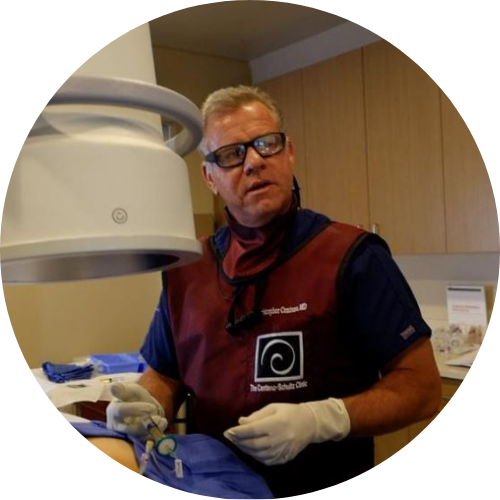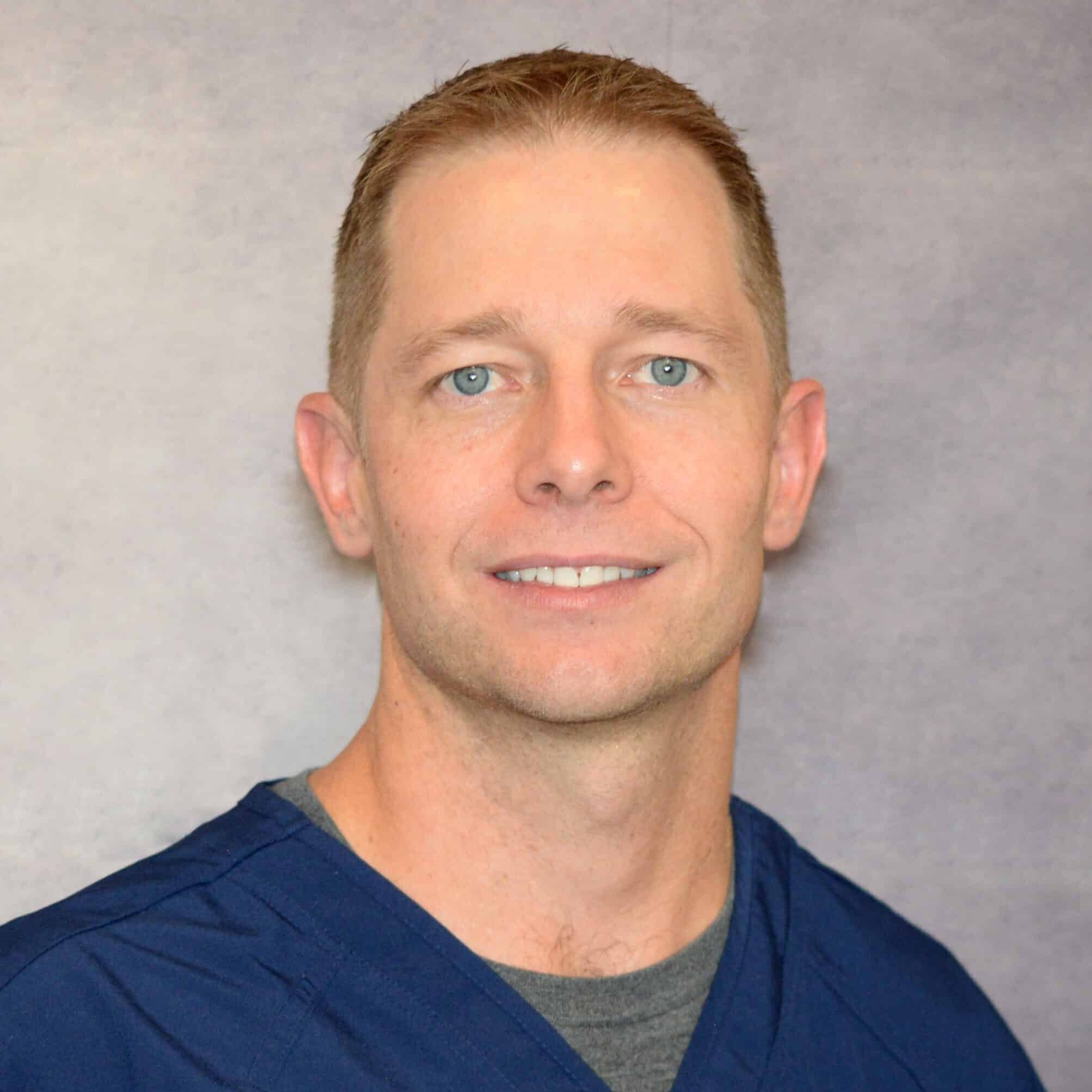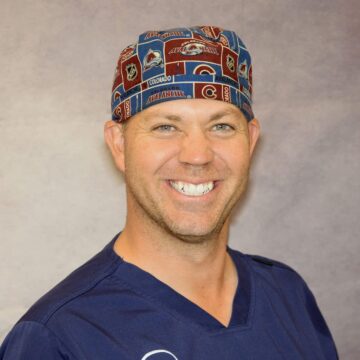9 Important Facts About PRP For Cervical Radiculopathy
Am I a Candidate?Do you have debilitating neck or arm pain and have been told you have cervical radiculopathy? You don’t want to have surgery for it, but you are unsure about non-surgical options? Or perhaps you have heard of PRP but you don’t know if or how it can help your cervical radiculopathy.
Learn about how you can potentially treat your cervical radiculopathy with non-surgical alternatives such as PRP. Drugs and surgery are not your only options. Both could be potentially helpful, but they each have substantial risks. Drugs do not address the problem, only offer temporary help to mask the symptoms, and they have many potential side effects.
Sometimes surgery is needed to treat cervical radiculopathy, but most of the time you can avoid surgery and its high risks. Therapies that help your body heal such as PRP are gaining more understanding and research to show they can be a safe effective tool to treat orthopedic problems like cervical radiculopathy.
1. PRP Heals The Cervical Spine Naturally
PRP treatment is a viable alternative to surgeries such as artificial disk replacement (ADR) and anterior cervical discectomy and fusion (ACDF), as it utilizes the body’s own growth factors to encourage damaged tissue to repair and heal itself.
Often, cervical radiculopathy is caused by protruding, herniated, or ruptured discs in the cervical spine area irritating nerves. Instead of replacing or removing the discs, PRP can help the disks to heal, thus limiting the compression or irritation on the adjacent nerves. PRP can also be used to help the compressed nerves repair themselves so that they function better and don’t hurt.
Why Cervical Spine Surgeries Don’t Always Work
ADR and ACDF surgeries can be helpful for cervical radiculopathy but are not perfect and have substantial risks. Surgery is sometimes the only viable option if there is direct nerve injury due to direct compression from severely herniated or ruptured discs, spondylolisthesis grade 2, spinal cord injury, or a mass such as a tumor or bleed, etc.
In most other cases where the nerve is getting intermittently compressed or irritated, surgery is not necessary and should only be used as a last resort if conservative measures fail. Also, surgery does not always work. Sometimes patients still can have pain after surgery, or one pain goes and they develop new pains.
Surgery risks include nerve or spinal cord injury, paralysis, cerebral spinal fluid leak, infection, bleeding, loss of range of motion, etc. Also, even when surgery does go well, most patients will get degeneration and pain at the levels above or below the surgery, known as adjacent segment disease.
How PRP Maintains The Spine
In contrast to surgery, PRP has much less risk than surgery, since it is delivered via injections, which are much less invasive. Also, there is no damage done with injections or PRP to healthy tissue. PRP treatment allows you to keep all of your natural body parts. Instead of removing, replacing or removing tissues, you stimulate or accelerate the natural healing process.
2. PRP Doesn’t Contain Harmful Steroids
Traditional injection based therapy consists of injecting high dose corticosteroid around irritated nerves to reduce inflammation and help pain. These can be helpful in the short term for pain relief but they do not offer long-term help. Steroids don’t always help pain either.
Steroids also have many potential side effects such as damaging tissues, inhibiting healing, increasing the risks of infection, increasing the risk of surgical complications (if surgery is needed), causing bone loss, and metabolic dysfunction. Particulate steroids can also cause a blockage in blood vessels inadvertently injected into an artery, causing a stroke.
Contrarily, PRP or a derivative of PRP called platelet lysate (PL) can be injected around irritated nerves as well. PRP and PL can naturally reduce inflammation, but also stimulate blood flow and repair to the nerve.
Additionally, PRP can be injected into torn cervical discs in order to repair the tears in the outer portion of the disk called the annulus. If these tears are healed, that leads to less protrusion of the disk, so less irritation around the nerves.
Furthermore, cervical radiculopathy also can be affected by the neck stability with regard to ligaments. PRP can be injected into weak or damaged ligaments, stabilizing the neck and taking pressure off the disks and nerves. Steroids cannot be injected into disks or ligaments as that would break down those tissues.
3. PRP Reduces Dependence On Pain Relievers
Since PRP actually heals tissues and addresses some of the root problems causing cervical radiculopathy, this can provide long-lasting effects such as reduced pain. Subsequently, patients don’t need to take pain medicines for relief. Thus, you can reduce the potential side effects of NSAIDs and opioids.
Why We Don’t Recommend Pain Medication For Cervical Radiculopathy
Most doctors recommend taking NSAIDs initially to help cervical radiculopathy pain. NSAIDs can help pain by reducing inflammation. But, similar to steroids, they have many side effects. NSAID side effects include inhibiting bone and tendon healing, increasing the risks for heart attack and stroke, kidney injury, GI bleeds, decreased testosterone and risks of chronic pain.
NSAIDs also inhibit platelets and can decrease the efficacy of PRP treatment, so they cannot be used around the same time.
Opioids are strong pain medications that also have high risks of dependence and addiction and when used for long periods of time can also increase pain.
4. PRP Treats Pinched Nerves At The Source
Cervical radiculopathy is a complex diagnosis with many variables that cause the nerve irritation. PRP can be used to address many of those structures that can lead to nerve irritation, such as the irritated nerves themselves, the injured disk(s), swollen facet joints, lax ligaments causing instability, and injured muscle tendons causing instability.
PRP can be precisely injected under direct ultrasound and or fluoroscopic guidance to help repair these damaged structures. Thus, PRP helps to treat the root causes of cervical radiculopathy, which can lead to better and longer lasting results.
However, you need a well-trained physician who can make the correct diagnosis and have the skill to precisely and safely inject these structures.
5. PRP Treatment Isn’t Very Painful
PRP can be performed very safely and comfortably in skilled hands. The procedures can be done in an outpatient clinic with local anesthetic or with mild sedative medications orally or via IV. Many measures can be used to maintain patient comfort. With image guidance, the injections are much safer, precise and less painful as well.
6. There’s Little to No Downtime before You Go Back to Your Normal Routine
Recovery from PRP procedures versus surgery is as different as night and day.
After surgery, you’ll likely have to spend one or two days in the hospital afterwards. You may be braced in a cervical collar for several days to weeks.
You’ll likely have to be on strong pain medication for several days to weeks for post procedural pain. You will have to manage surgery. Return to basic activities and working could be weeks, and return to normal activities can take six to 12 months.
In contrast, PRP is an outpatient procedure and you go home shortly after the procedure. You may have some mild soreness for a few days and some patients may need strong pain medication for a couple of days. Typically, no cervical neck brace is needed. Return to basic activities and work is within a few days. Return to normal activities can be three to six months.
PRP requires much less recovery time because no damage is done during the procedure and all PRP is doing is stimulating your natural healing process.
Will The Neck Pain Go Away Immediately?
With PRP, pain gradually improves over time. It is not usually an immediate effect, as it takes time to heal.
When Will I See Signs Of Improvement?
Most people will start to see improvement after one to three weeks, then progressively improve more and more over three to six months.
7. Many Patients Can Be Candidates for PRP
PRP treatments can be considered for sufferers from chronic pain in the cervical spine that doesn’t respond to traditional therapy. PRP can help:
- Athletes
- People suffering from chronic joint pain
- Patients with work-related injuries
- Patients involved in motor vehicle accidents
8. You Can Combine PRP With Physiotherapy
PRP can and should be combined with other non-invasive therapies, the most important being physical therapy. Physical therapy is essential to help examine and treat problems with posture, alignment, biomechanics, asymmetry, weakness, loss of range of motion, etc.
Other non-invasive modalities such as massage, myofascial release, shockwave, laser, some chiropractic care, etc are fine to combine with PRP as well.
9. PRP Has Long-Term Effects
Since PRP just enhances your healing mechanisms, it has long-term effects.
- PRP can restore more normal function to the neck.
- PRP treatment can help you avoid or delay the need for surgery.
- PRP is safe and doesn’t harm the spine in the long term.
Choose The Ideal Non-Surgical Treatment For Cervical Radiculopathy
At the Centeno-Schultz Clinic, our doctors can assist patients in their cervical radiculopathy diagnosis and choice of treatment. We have been treating cervical radiculopathy for almost two decades with regenerative treatment options such as PRP.
If you are a candidate for PRP treatment, we will use our specialized lab processing protocols to optimize your PRP. We also use advanced image-guided injection techniques to precisely and safely place the PRP exactly where it needs to be to optimize healing. We track our patients in a registry so we can see our cervical outcomes.
Patient Results – Regenexx and publish peer reviewed research Cureus | Regenerative Injection Treatments Utilizing Platelet Products and Prolotherapy for Cervical Spine Pain: A Functional Spinal Unit Approach | Article.
Read John’s experience with PRP for cervical radiculopathy.
The ideal treatment for cervical radiculopathy exists. Read more about the condition to see how you, too, can be a candidate for PRP treatment.

Christopher J. Centeno, MD
Christopher J. Centeno, M.D. is an international expert and specialist in Interventional Orthopedics and the clinical use of bone marrow concentrate in orthopedics.
Dr. Centeno is one of the few physicians in the world with extensive experience in the culture expansion of and clinical use of adult bone marrow concentrate to treat orthopedic injuries. His clinic incorporates a variety of revolutionary pain management techniques to bring its broad patient base relief and results. Dr. Centeno treats patients from all over the US who travel to Colorado to undergo innovative, non-surgical treatments. Dr. Centeno has chaired multiple international research-based conferences. He also maintains an active research-based practice, with multiple publications listed in the US National Library of Medicine. Dr. Centeno has also served as editor-in-chief of a medical research journal dedicated to traumatic injury.
Dr. Centeno trained at the Baylor College of Medicine, Texas Medical Center, and the Institute for Rehabilitation Research. He hails from both Florida and New York and currently resides in Boulder, Colorado with his wife and three children.

John Schultz, MD
John R. Schultz M.D. is a national expert and specialist in Interventional Orthopedics and the clinical use of bone marrow concentrate for orthopedic injuries. He is board certified in Anesthesiology and Pain Medicine and underwent fellowship training in both. Dr. Schultz has extensive experience with same day as well as culture expanded bone marrow concentrate and sees patients at the CSC Broomfield, Colorado Clinic, as well the Regenexx Clinic in Grand Cayman. Dr. Schultz emphasis is on the evaluation and treatment of thoracic and cervical disc, facet, nerve, and ligament injuries including the non-surgical treatment of Craniocervical instability (CCI). Dr. Schultz trained at George Washington School of…
Read more
John Pitts, M.D.
Dr. Pitts is originally from Chicago, IL but is a medical graduate of Vanderbilt School of Medicine in Nashville, TN. After Vanderbilt, he completed a residency in Physical Medicine and Rehabilitation (PM&R) at Emory University in Atlanta, GA. The focus of PM&R is the restoration of function and quality of life. In residency, he gained much experience in musculoskeletal medicine, rehabilitation, spine, and sports medicine along with some regenerative medicine. He also gained significant experience in fluoroscopically guided spinal procedures and peripheral injections. However, Dr. Pitts wanted to broaden his skills and treatment options beyond the current typical standards of care.
Read more
Jason Markle, D.O.
Post-residency, Dr. Markle was selected to the Interventional Orthopedic Fellowship program at the Centeno-Schultz Clinic. During his fellowship, he gained significant experience in the new field of Interventional Orthopedics and regenerative medicine, honing his skills in advanced injection techniques into the spine and joints treating patients with autologous, bone marrow concentrate and platelet solutions. Dr. Markle then accepted a full-time attending physician position at the Centeno-Schultz Clinic, where he both treats patients and trains Interventional Orthopedics fellows. Dr. Markle is an active member of the Interventional Orthopedic Foundation and serves as a course instructor, where he trains physicians from around the world.
Read more
Brandon T. Money, D.O., M.S.
Dr. Money is an Indiana native who now proudly calls Colorado home. He attended medical school at Kansas City University and then returned to Indiana to complete a Physical Medicine and Rehabilitation residency program at Indiana University, where he was trained on non-surgical methods to improve health and function as well as rehabilitative care following trauma, stroke, spinal cord injury, brain injury, etc. Dr. Money has been following the ideology behind Centeno-Schultz Clinic and Regenexx since he was in medical school, as he believed there had to be a better way to care for patients than the status quo. The human body has incredible healing capabilities…
Read moreAm I a Candidate?
To answer this question, fill out the candidate form below to request a new patient evaluation, and a patient advocate will reach out to you to determine your next steps. Your one-hour, in-office or telemedicine evaluation will be with one of the world’s experts in the field of Interventional Orthopedics.